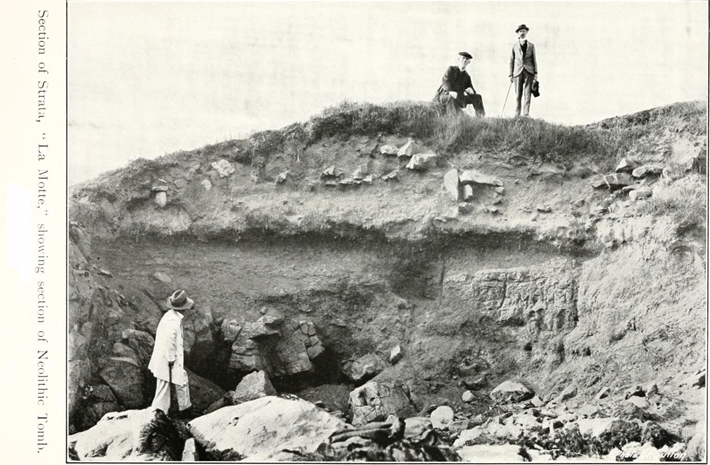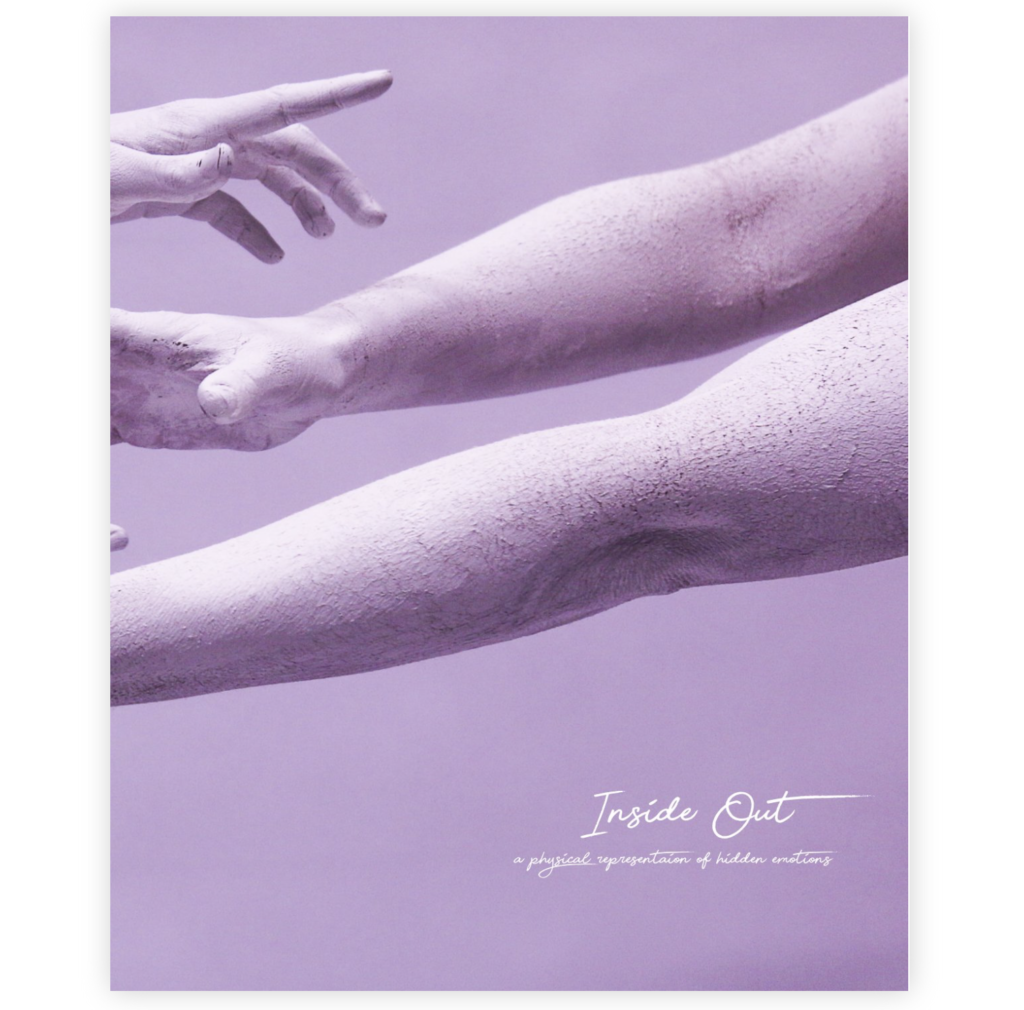
Daily Archives: November 23, 2018
Filters
Collages



La Motte History
Images from photo archive:


Archaeological excavations carried out between 1911 and 1914 showed that the islet had been occupied over a long period of time. Despite being quite small the site is unusual because it had several both ritual and domestic elements, as well as providing important environmental evidence relating to changes in sea level. The remains of a series of prehistoric rubbish heaps, dating between 1,500-300 BC, containing fragments of pottery, animal bones, stone tools and shells were found.
Group of 18 cists which were excavated were dated from the Bronze Age to the Iron Age. Two cists can be found at La Houge Bie.
Cist: An ancient coffin or burial chamber made from stone or a hollowed tree

La Motte is a tidal island, and listed archaeological site, also known as Green Island, located in the Vingtaine de Samarès in the parish of St Clement on the south-east coast of Jersey, Channel Islands.
The island has a grassy surface and is predominantly clay surrounded by rocks. In recent times efforts have been made to reduce erosion of the island by the construction of walls.

Some archaeological evidence has been found here. Remains of a cemetery on La Motte are believed to be from later settlers. There are Neolithic elements including a cairn and a number of middens, dating from 1500 BC to 300 BC, on La Motte.
http://photographic-archive.societe-jersiaise.org/Details/archive/110003728

To the east of Grève d’Azette beach lies Le Croc du Hurté. In the medieval period this small promentory actually extended out to what we now know as Green Island or to give it its old name, La Motte – the mound. Richard Popinjay from Portsmouth drew a map of Jersey for Queen Elizabeth I in 1563 which shows La Motte still part of the main island. At some stage in the 17th century a severe storm must have caused the waves to smash and wash away the thin strip of land connecting it to Le Croc du Hurté.
/arc-anglerfish-arc2-prod-jerseyeveningpost-mna.s3.amazonaws.com/public/BTV2F7FIYZCOJMDC3F7QT23XG4.jpg)


In September 1858 some children found a skeleton buried on the islet. The mystery was cleared up at the coroner’s inquest by 82-year old James Le Templier who said that he had discovered the body sewn in a hammock washed up on the islet about 50 years earlier. As there had been a naval engagement between a Royal Navy vessel and a French Navy brig a few days before, the Constable of St Clement declared the body to be that of a French sailor and ordered the soldiers from the Roqueberg battery to bury it on La Motte.
https://jerseyeveningpost.com/news/2009/10/23/witch-trials-in-jersey-fact-or-fiction/
https://jerseyeveningpost.com/features/2015/05/03/coast-gallery-spotlight-on-green-island/
The slipway, La Montée de la Sordonnière, was built about 1870 and takes its name from the beach – sordonnière means a sea slug.
At the far end of the beach is Rocqueberg. A guardhouse with an associated magazine was built here in 1691 from which the men of the St Clement’s militia kept a look-out in times of emergency. In the late 18th century two 24-pounder cannon were positioned here on a wooden platform behind an earth wall or boulevard.
In 1797 an accidental explosion destroyed the original guardhouse and because of financial constraints it was not replaced until 1802. By then a small detachment of the regular army was based here and it was these men who were tasked with burying the French sailor on Green Island.
Analysis of past student essay
Notes and evaluation on another book:
Anna Houiellebecq: Inside Out
Houiellebecq speaks much about the project being about capturing the physical representation of hidden emotions. Her body ‘inside out’ includes images of the subjects posing in a certain way that represent a specific emotion. Her images focus on particular areas of the body, this being hands and faces; small sections at a time. Her book also allows a creative way that allows shapes and movement to be seen throughout. It has a very contemporary feel because of the way the human body uses light and abstract visions. The variation of images spreading from the whole page to half of the page allows a portrait oriented angle of the book itself. There is no category to her images, which I enjoy as this is similar to the narrative aspect that I too am looking for in my images. To do so the images are linked in similar ways through either colour or perhaps subject.Her images have a variation of coloured and black and white as this allows a contrast within the flowing format already. She decided to choose the ‘bath images’ to go into black and white as this looked better this way as the contrast of tones work better in black and white. An aspect of her book I throughly enjoy is the use of poems about particular aspects of the body itself. And for these double pages she used a similar colour themes and aesthetic as much as possible.
I think her title is very suiting and successful when thinking about the completion of this book ‘Inside out’ came from an expression of hidden emotions in a physical embodiment of human form. Another aspect I thought was successful was how the colour throughout looked professional and clear and precise to the overall Finish of the book itself. She was very clear with the amount of research she produced when speaking about body image and exploring how body expresses hidden emotions. She released though her research how bodies are usually intertwined and inspired by daily physical contact. she decided photographing political, social and emotional groups of a person was successful. I think this is interesting as this was similar to one of my first ideas about the exploration of human emotion reflected in a landscape. However I think when considering the sublime, I might consider the emotions behind the sublime itself, This would be considering how sublime emotions are within ourselves, and we do not know others emotions or inner feelings.Her essay question is quite substantial asking ‘how and why do photographers use the human body to physically express hidden emotions’
I believe her work is full marks, her work is conceptual and allows many bodies of work to inter-twin successful into one working concept. Her essay is clear and expands onto the following topics of politics, culture, sexuality and gender issues. Her images not only show political issues but they show emotion through the smallest of areas on the body, which I think is so hard to accomplish yet she achieved this so well. I find it fascinating how she talks about how the human body can be used as a tool to express what cant be said in photography. or as a ‘physical visualisation of unheard emotions’. The way she so successfully analysis her images making sense of what is happening and what she is trying to connote, is easily understood yet also well in depth and creates an awareness to whats he is trying to achieve.
She talks about the physiology of her work, clearly expanding from just a photographers view on the subject. Her references to other artists that successfully join into her work. Her analysis is also divided into conceptual and surreal forms of looking at the body, I think this important because there are so many possible variations and ways in which you could view the art so doing a clear depiction divided in a way such as this is very clear and shows conceptual thinking. I think many of the conceptual themes of her book such as the colour scheme not only intertwine the written work to her visual but also creates a sense of mimicry within the colours symbolising the emotions she is trying to convey.she also successfully links her written work and the whole book itself to specific photographers and this essence of cohesion really helps to achieve her subject matter and her artists linked and wholly visible within her work. The Themes I would like to take out o this book are t pieces of text she uses in order to almost explain and deep then the thought of her work. I also believe how she used colour was so well thought out and received. I think her images themselves have such a strong overall theme yet and narrative yet without having to tell a chronological story which I would also like to show within my own work. Her subjectivity and images work well hand in hand and I think this piece as a whole was so well thought out ,presented and achieved and I will sue this as the basis of my own inspiration .

